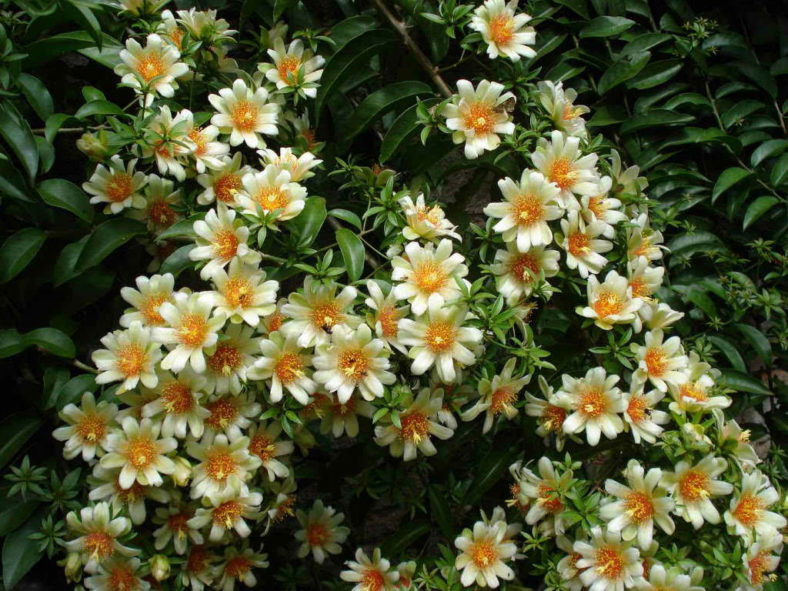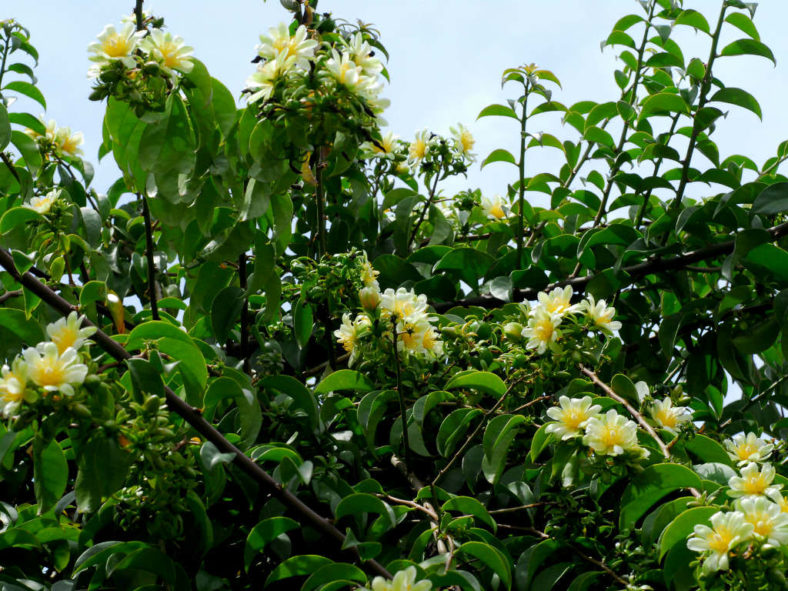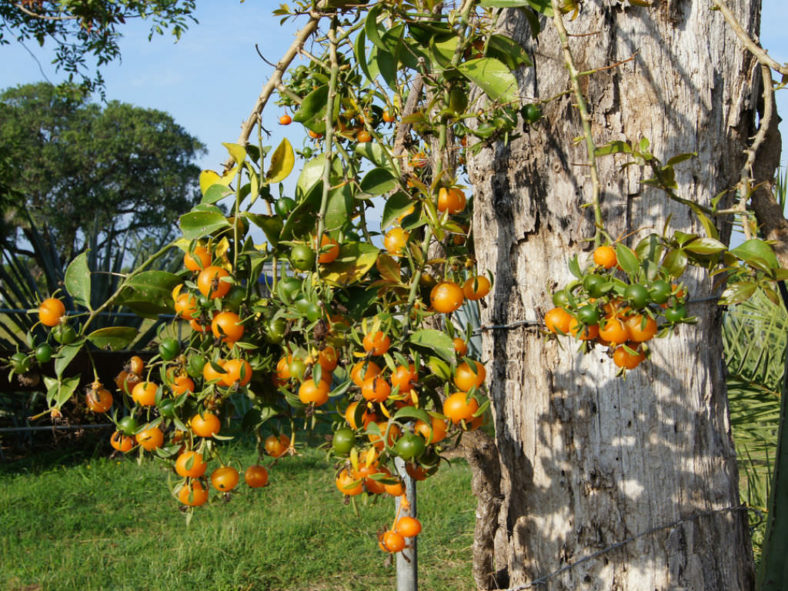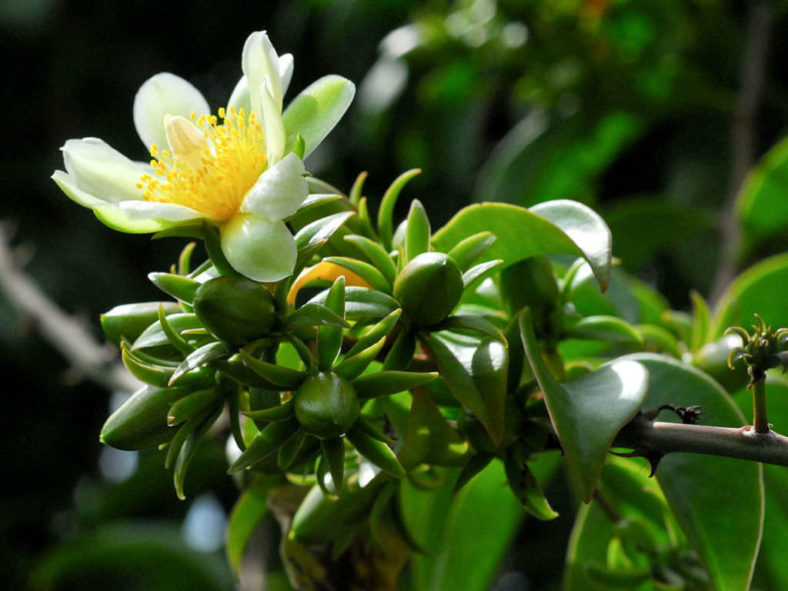Scientific Name
Pereskia aculeata Mill.
Common Name(s)
Barbados Gooseberry, Barbados Shrub, Leaf Cactus, Ora-Pro-Nobis
Synonym(s)
Cactus pereskia, Pereskia aculeata var. aculeata, Pereskia pereskia
Scientific Classification
Family: Cactaceae
Subfamily: Pereskioideae
Genus: Pereskia
Etymology
The specific epithet "aculeata" (pronounced "a-kew-lee-AH-tuh") means "prickly" and refers to the spines on the branches of this species.
Origin
Pereskia aculeata is native to the Antilles, Panama, and Colombia. It is also reported from southern Florida in the United States and Mexico, perhaps as an escape.
Description
Pereskia aculeata is an unusual, shrubby cactus with long, whip-like branches that bear glossy, dark green leaves and cushion-like areoles with straight or hooked spines. It grows on trees in their native habitat. The branches are at first erect, later clambering, and can reach a length of 33 feet (10 m) and a diameter of 1.2 inches (3 cm). The areoles bear 1 to 3 straight spines near the woody base of the plant and pairs of short, hooked spines in the leaf axils towards the top of the branches. The leaves are oblong to ovate with a short petiole, measuring up to 2.8 inches (7 cm) in length and 1.6 inches (4 cm) in width. In the plant's native habitat, the leaves are deciduous in the dry season. The spines are brown to nearly black, with variously colored bases in new growth, becoming gray with age. They can grow 1.4 inches (3.5 cm) long.
The flowers appear arranged in terminal or axillary panicles aggregated towards the top of the branches in summer. They are strongly scented and vary in color from white, cream, and yellow to pinkish. The flowers can reach a diameter of up to 2 inches (5 cm). The edible fruits are globose berries with inconspicuous thornless areoles, yellow or orange when ripe, and contain smooth, dark brown seeds, measuring up to 0.8 inches (2 cm) in diameter.

Hardiness
USDA hardiness zones 9b to 11b: from 25 °F (−3.9 °C) to 50 °F (+10 °C).
How to Grow and Care
As with many cacti, Pereskias can be almost ignored and still flourish. One of the major advantages these plants pose as houseplants is their ease. Overwatering or overfeeding them poses a greater danger than neglecting them, as it can damage their roots. If you repot them, remember to leave them alone briefly to avoid overstressing them, and keep an eye out for common houseplant pests. Many of these cacti can't be grown as houseplants anyway due to their shrubby growth habit, and others are very rare, but when you do find out, Pereskias can be good in cultivation.
They prefer dry conditions and don't need frequent repotting, but it is still a good idea to refresh their soil by repotting occasionally. Be careful when repotting any cactus so as not to get hurt by its sharp spines. Remove the plant from its mix and transfer it to a new container before backfilling with soil. Do not water for a few weeks after repotting.
Learn more at How to Grow and Care for Pereskia.
Links
- Back to genus Pereskia
- Succupedia: Browse succulents by Scientific Name, Common Name, Genus, Family, USDA Hardiness Zone, Origin, or cacti by Genus
Photo Gallery
Click on a photo to see a larger version.


